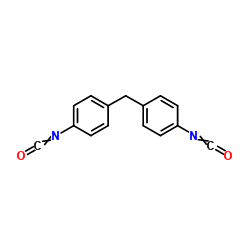Prevalence of occupational asthma in spray painters exposed to several types of isocyanates, including polymethylene polyphenylisocyanate.
P Séguin, A Allard, A Cartier, J L Malo
Index: J. Occup. Med. 29(4) , 340-4, (1987)
Full Text: HTML
Abstract
The prevalence of occupational asthma was assessed in four paint shops of a large assembly plant where 51 employees were exposed to several types of isocyanates, including polymethylene polyphenylisocyanate (PPI). Three employees were first referred by their physician for asthma symptoms. A questionnaire was administered to the other 48 employees. Seven of these were suspected of having work-related asthma. Airway hyperexcitability to inhaled histamine was demonstrated in these ten subjects (three referred and seven screened). The diagnosis of occupational asthma was confirmed in six subjects (three referred and three screened) through specific inhalation challenges in the laboratory to a paint system component containing PPI. Thus, the prevalence of occupational asthma was 11.8% in these paint shops using several types of isocyanates, including PPI.
Related Compounds
| Structure | Name/CAS No. | Molecular Formula | Articles |
|---|---|---|---|
 |
Polymethylene polyphenyl polyisocyanate
CAS:9016-87-9 |
C15H10N2O2 |
|
Toxicology, industrial hygiene and medical control of TDI, M...
1982-02-01 [Am. Ind. Hyg. Assoc. J. 43(2) , 89-97, (1982)] |
|
Mechanical properties of polyurethane foams prepared from li...
2008-05-01 [Bioresour. Technol. 99(7) , 2265-8, (2008)] |
|
Protein adsorption and endothelial cell attachment and proli...
1993-04-01 [J. Biomed. Mater. Res. 27(4) , 499-510, (1993)] |
|
Application of tryptamine as a derivatizing agent for airbor...
1988-08-01 [Analyst 113(8) , 1209-12, (1988)] |
|
Microcapsules with three orthogonal reactive sites.
2009-04-02 [Org. Lett. 11(7) , 1479-82, (2009)] |